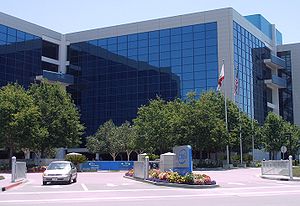| English: Hillsboro Stadium in Hillsboro, Oregon (Photo credit: Wikipedia) |
In my last posting I talked about sports stadiums when specifically talking about economic development and how they don't actually accomplish what they set out to do. Today I am going to focus on the new Hillsboro stadium which next year will be home to the Hillsboro _________ baseball team that is currently the Yakima Bears.
As I mentioned in my last posting, you often here how wonderful these new stadiums are, how they will attract so much spending and will benefit the whole city. If you read Paul Allen's autobiography you will get a very good one sided opinion on the importance of the new stadium that was built in Seattle. The one good point about the new Seattle stadiums is that they are located near downtown will good transit access. The question is, what is their true cost?
Now lets take a look at the recently approved stadium in Hillsboro which will be built near Evergreen Drive and 229th. The stadium is located near the US Highway 26 but is two miles from the nearest MAX station and located near one of TriMet's weaker all day lines the 47 which after next week will take over the weakest portion of route 89 and travel from the Sunset Transit Center to Hillsboro. The route only runs Monday through Friday with limited evening service.
That means that access the new stadium via transit is a non-starter unless you want to walk two miles along roads that are design to speed drivers and not designed to make it a pleasant walk. I have walked some of the streets in the area and can tell you they are not designed with the pedestrian in mind. Now compare that to the Salt Lake Bee's stadium that is located just one short block from the TRAX light rail station on 1300 South in Salt Lake City, which one would your rather access:
Hillsboro:
View Larger Map
Salt Lake City:
View Larger Map
We can basically assume that most people are going to drive to the new stadium since transit is a non-starter. To make matters worse most of the weekday games will probably be in the evenings when the most number of people will attend so that means that it will make traffic conditions along US Highway 26 even worse with no alternatives to being stuck in traffic.
Then there is the financing of the stadium. The city of Hillsboro will finance the cost of the stadium by issuing a bond. Supposedly the bond will be repaid through ticket sales and naming rights through the stadium. However, the city is already stated that they will probably not be enough to repay the bond so the taxpayers will be on the hook.
Then we have the issue of the so called "multiplier affect". There is some typical chain fast food places located to the east of the new stadium along with a Fred Meyer big box store. Most of the other sit down restaurants are located a distance from the new stadium site. Beyond that most of the area is devoted primarily industrial which will be unwelcoming to those heading for the games.
How many dollars will be lost to other businesses is unknown and would most likely be felt outside the Hillsboro area although the movie theater in Hillsboro may see an affect.
When the debate was going on in Salt Lake City for a new soccer stadium that was finally put on the backs of tourist who will never probably use the facility, one long time Salt Lake talk show host Doug Wright who is also a major sports nut said that investments like these are important to the community. Of course I have shown that those dollars have to come from somewhere and often it is from businesses not located near the facility. So what is the answer?
Related articles
















